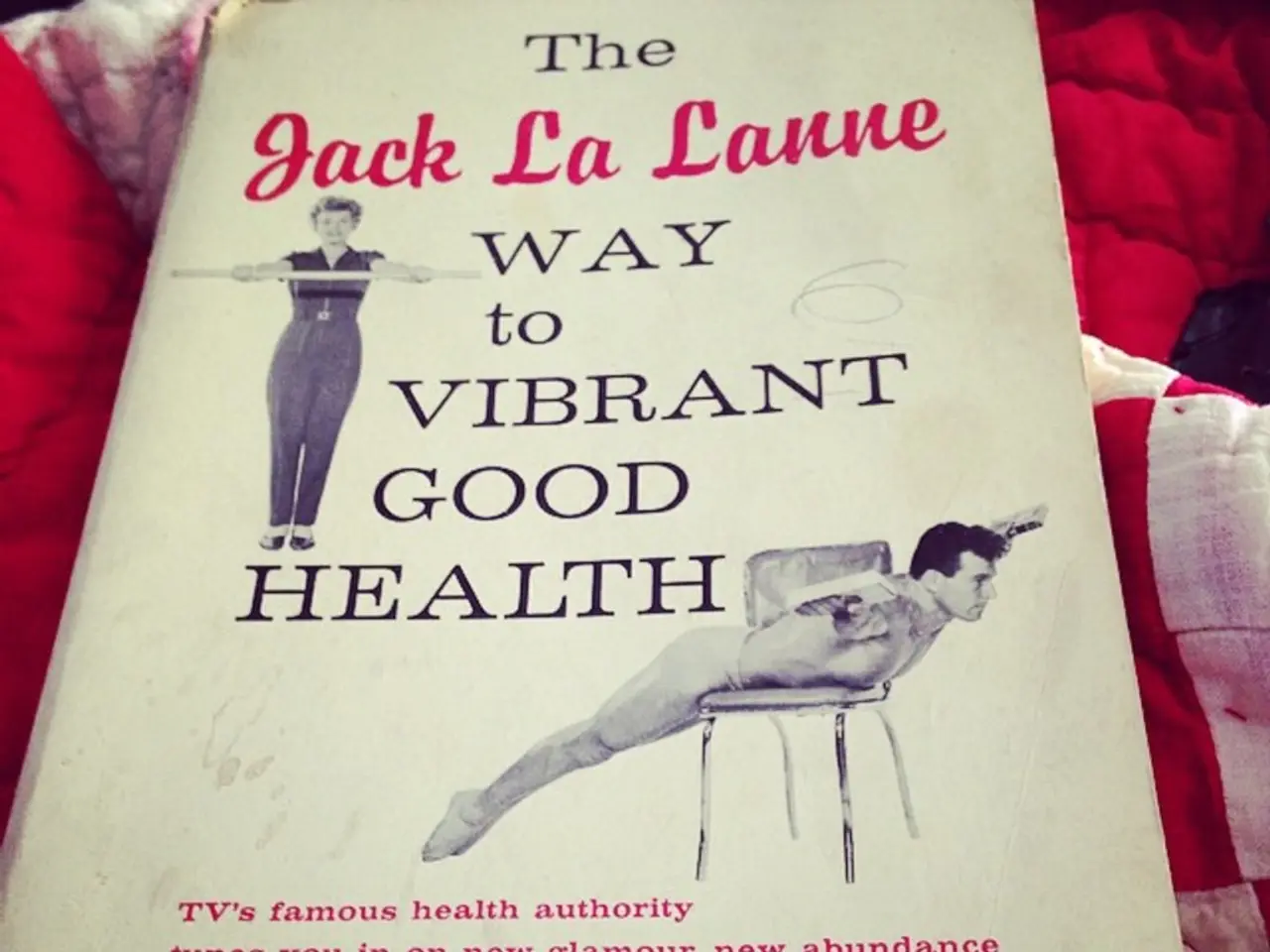The Invisible Crisis: Malnutrition Plaguing Elderly Hospital Patients in Germany
Elderly patients at the clinic showing signs of nutritional deficiencies, alarming healthcare providers. - Issue of undernourishment among geriatric healthcare recipients
It's a grim reality that many elderly hospital patients in Germany aren't receiving the nutrients they need, according to the German Society of Geriatrics (DGG). This overlooked issue isn't about flashing alarms or rapid heart rates, but the lack of proper sustenance that can have serious consequences—a fact that Kristin Häseler-Ouart, a senior physician in the Department of Geriatrics at University Hospital Jena, tragically confirms.
In an interview with the German Press Agency, Häseler-Ouart stated bluntly, "The food on the hospital plates isn't what a seriously ill patient needs." The situation is so dire that she added, "We're not living in the Third World, but our patients in hospitals are malnourished."
Malnutrition is a significant problem for older people, especially after a hospital stay. Weak muscles make it harder for the elderly to move independently, an issue already prevalent due to age. Moreover, weak muscles increase the risk of falls, which often lead to severe consequences.
Häseler-Ouart explained that some hospital wards combat hospital-acquired malnutrition through high-calorie supplements similar to those used in fitness studios. However, there are other reasons contributing to malnutrition, according to the guidelines from the German Society of Nutritional Medicine.
Older adults often struggle with chewing or swallowing, consume inadequate amounts of food, have limited arm and hand mobility, and may live in social isolation. The guidelines suggest that older adults should be encouraged to eat and, if possible, have meals in the company of others to minimize the risk of malnutrition.
However, rural areas pose challenges, with geriatric clinics sometimes more than 45 minutes away by car. Geriatrics, the branch of medicine focused on the elderly, often struggles to provide comprehensive care in these remote locations.
Malnutrition in the elderly is a complex issue, arising from combinations of factors like aging, chronic illnesses, and suboptimal integration of nutritional care. It's a critical concern that calls for systematic screening, personalized nutritional support, and interprofessional collaboration among hospital care teams.
[1] Aging & Disease, 2021 Jan; 12(1): 74-88
[2] Clinical Nutrition, 2018 Feb 15; 37 Suppl 1: S1-S86
Keywords: Malnutrition, University Hospital Jena, Geriatrics, Patient, Elderly, Malnutrition Risk Factors, Social Isolation, Geriatric Clinics, Nutritional Care Integration, Rural Care, Dietary Supplements.
- The community policy should address malnutrition in elderly hospital patients, as highlighted by the German Society of Geriatrics (DGG).
- Vocational training for healthcare professionals could focus on identifying and addressing malnutrition in elderly patients.
- Malnutrition is a pressing issue in Germany, where elderly patients in hospitals aren't receiving the necessary nutrients.
- University Hospital Jena's senior physician, Kristin Häseler-Ouart, has confirmed the serious consequences of malnutrition in elderly patients.
- The food provided to elderly patients in hospitals often doesn't meet the nutritional needs of seriously ill patients.
- Malnutrition isn't just an issue in developing countries, even in developed countries like Germany, hospital patients are malnourished.
- Malnutrition is a significant problem for older people, particularly after a hospital stay, as it can lead to weak muscles.
- Weak muscles in the elderly make it harder for them to move independently and increase the risk of falls.
- High-calorie supplements are used in some hospital wards to combat hospital-acquired malnutrition.
- According to guidelines from the German Society of Nutritional Medicine, there are other contributing factors to malnutrition in the elderly.
- Older adults may struggle with chewing or swallowing, consume inadequate amounts of food, have limited arm and hand mobility, and live in social isolation.
- Social isolation increases the risk of malnutrition in older adults.
- Geriatric clinics in rural areas can be challenging to access, often being more than 45 minutes away by car.
- Suboptimal integration of nutritional care is a contributing factor to malnutrition in the elderly.
- Malnutrition in the elderly is a complex issue, arising from combinations of aging, chronic illnesses, and factors like social isolation.
- The guidelines suggest that older adults should be encouraged to eat and, if possible, have meals in the company of others.
- Malnutrition in the elderly requires systematic screening, personalized nutritional support, and interprofessional collaboration among hospital care teams.
- Medical-conditions such as chronic kidney disease, cancer, respiratory conditions, digestive health issues, eye health problems, hearing difficulties, and cardiovascular health issues can increase the risk of malnutrition in the elderly.
- Autoimmune disorders can also increase the risk of malnutrition in the elderly.
- Climate change can affect food production and distribution, leading to increased food prices and potential malnutrition among the elderly.
- Aging and chronic diseases increase the need for vocational training in healthcare, environmental science, nutrition, and various industries.
- Fitness and exercise are crucial for maintaining health and wellness as one ages, but elderly patients in hospitals may not have access to these resources.
- Science can help develop new treatments and dietary supplements to address malnutrition in the elderly.
- Finance is essential for funding research into malnutrition in the elderly and for implementing community policies to address this issue.
- Energy-rich foods are necessary for elderly patients who are malnourished, and manufacturing companies could develop such products.
- Skin conditions, as well as eye, hearing, and other health issues, can be exacerbated by malnutrition, highlighting the importance of addressing this problem.
- Space and astronomy, retail, interior design, cooking, transportation, wearables, smart home devices, cybersecurity, lifestyle, outdoor living, fashion and beauty, food and drink, investing, wealth management, home and garden, home improvement, baking, business, venture capital, personal finance, recipes, banking, and insurance are all part of the broader context influencing the lifestyle of the elderly and their susceptibility to malnutrition.








